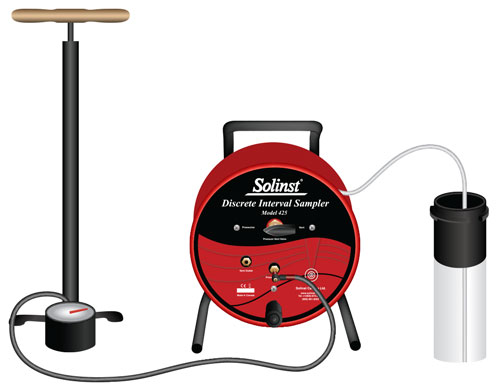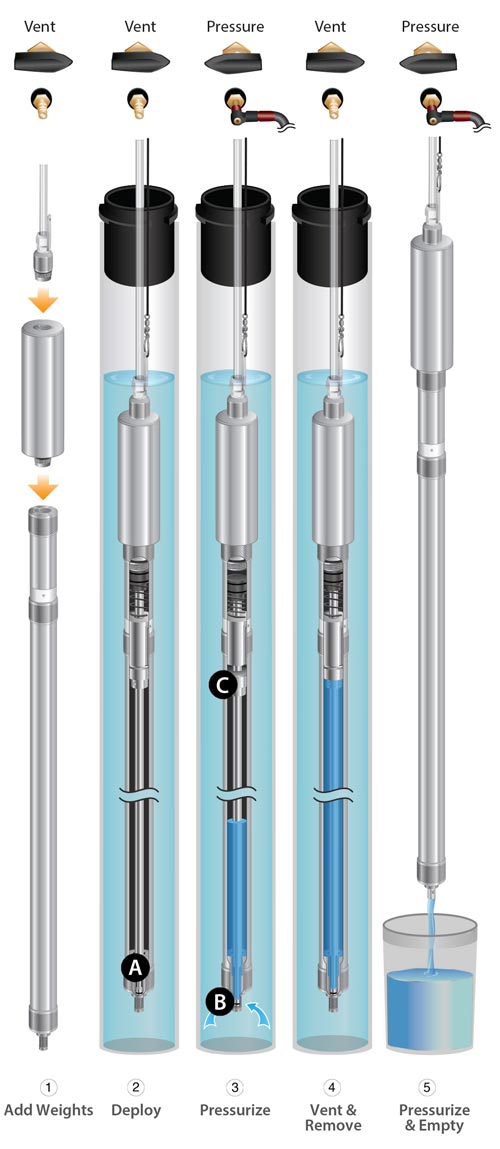
High Pressure Hand Pump Tubing Reel with Pressure/Vent Valve

Operating Steps
- To overcome buoyancy, weights are threaded onto the top of the Deep Sampling Discrete Interval Sampler (DIS) before lowering. After the first 100 m (300 ft), one 2 kg weight is added for every additional 100 m (300 ft) of submerged depth (see Operating Instructions).
- Connect tubing to the DIS and ensure the Pressure/Vent Valve is set to Vent. A cable connector is included for easy connection to a suspension cable or Model 103 Tag Line. Lower the DIS into the well to the desired sampling depth.
- A - The Sampler remains sealed as it is lowered to depth.
- At the sampling depth, turn the Pressure/Vent Valve to Pressure. Using the hand pump, pressurize the DIS to the required pressure for that depth (see Operating Instructions) Allow 5-10 minutes for the DIS to fill.
- B - The pressure acts on the top of the internal Piston (large surface area) overcoming hydrostatic pressure acting on the bottom of the Piston (smaller surface area) pushing the Sample Release Valve open.
- C - As the Piston Assembly moves to open the Sample Release Valve, it also moves the Pressure Retainer away from a small o-ring sealed opening in the bottom of the Pressure Chamber, allowing the air to vent through the Vyon Filter on the exterior of the DIS, while it fills with water.
- Once the sample is collected, switch the Pressure/Vent Valve back to Vent. This depressurizes the line and allows the Piston Assembly to retract and close the Sample Release Valve.
- At the surface, turn the Pressure/Vent Valve to Pressure. Apply a minimum of 30 psi to open the Sample Release Valve and allow sample discharge. Increasing the pressure to 50 psi will increase sample discharge to about 250 mL/min.
Note: Remove the sample screen from the bottom of the DIS for a more controlled sample flow.



